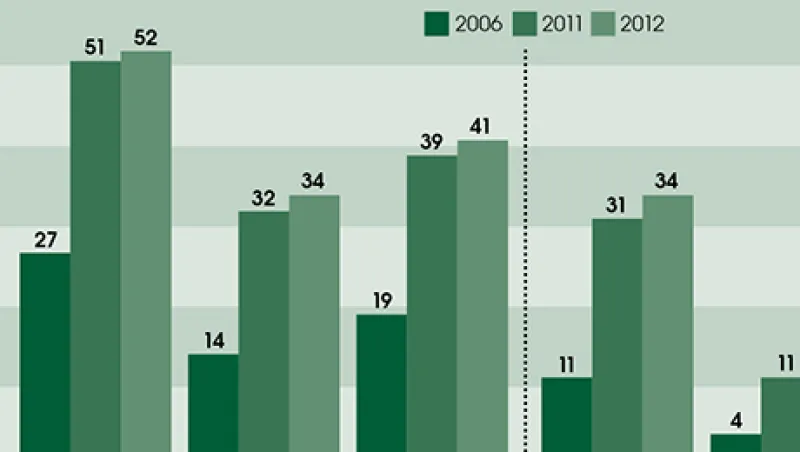Target Date Funds have never been more popular. But that growth has raised a question: Are these funds, economical savings vehicles that shift their holdings as a retirement date or other investment goal nears, always the best choice? More than 40 percent of U.S. defined-contribution-plan participants use target date funds, according to the latest data from industry association the Investment Company Institute and the Employee Benefit Research Institute. Strikingly, fully 52 percent of them are in their 20s. The U.S. Department of Labor is now asking if such funds fit every employee’s needs, a move that could nudge plan sponsors with fiduciary liability to assume a bigger oversight role than they can manage themselves or to get fund providers to deliver at current prices.
Target date funds’ default strategy of automatically adjusting holdings to lower-risk assets as goal dates approach is simplistic, critics say. Another accusation: Sponsors often fail to properly vet the funds on offer, lazily sticking with a few from the Big Three providers — Fidelity Investments, T. Rowe Price and Vanguard Group, which together held 73 percent of the $616 billion target date fund market as of January. To make things worse, skeptics charge, fund components are limited to the fund provider’s offerings.
Too many plan sponsors are blindly adopting target date funds because they meet regulatory approval for deferral of contributions by employees who haven’t chosen a fund, says James Watkins III, CEO of InvestSense, an Atlanta-based advisory firm that serves individuals and pension plans. Funds are “generally only rebalanced once a year and only to the original specifications, with no option to adjust allocations in relation to changes in the market or the economy,” Watkins adds. “As a result, investors may be exposed to unnecessary investment risk.”
There’s a big gap between what the DoL expects plan fiduciaries to do and what they’re actually doing, says ERISA attorney C. Frederick Reish, head of the employee benefits group at Washington-based law firm Drinker, Biddle & Reath. “These kinds of gaps are red flags,” he warns. “And those flags are signaling changes to plan sponsors.” Reish sees disparities between current practices and the guidelines published by the DoL. He singles out a tip on customizing plans: Fiduciaries should consider participant demographics as well as factors such as participation in other plans, salary levels and withdrawal patterns. “In other words, there is no such thing as a one-size-fits-all TDF,” Reish says. “But how many fiduciaries do that?”
Some observers defend the Big Three’s dominance. “Few companies can break through and build really good 401(k) platforms profitably,” says Todd Cipperman, founding principal of Wayne, Pennsylvania–based Cipperman Compliance Services, whose clients include investment firms that advise defined-contribution sponsors.
“Many plan sponsors don’t have the time or experience to monitor the complexities,” says Joshua Cohen, Chicago-based head of institutional defined contribution at Russell Investments. Seattle-based Russell, which has $130 billion in defined-contribution assets under advisement in the U.S., will soon launch a new line of target date funds called Adaptive Retirement Accounts through a partnership with Chicago-based NextCapital Group, whose PlanOutcome software helps plan sponsors project results for individual portfolios, enabling ARAs to gradually adjust fund risk.
The DoL’s tips are encouraging sponsors to think about customized funds, says Catherine Gordon, a Valley Forge, Pennsylvania–based principal in the investment strategy group at Vanguard, which runs some $165 billion in target date funds: “Customized TDFs is a conversation we’re having with clients now.” Some plan sponsors are also considering using their defined-benefit-plan managers to customize their defined contribution plans, thereby leveraging relationships and fee arrangements, Gordon notes.
T. Rowe Price, which manages $105 billion in target date assets, offers active and passive funds that it rebalances quarterly. “Additionally, as markets move, if the portfolio falls outside our rebalance, then we do discretionary trades,” says Jerome Clark, Baltimore-based portfolio manager for T. Rowe Price Retirement Portfolios. The problem with custom offerings is that they have no performance history, Clark explains. “Many look for a three- to five-year record to track performance against other funds, but that doesn’t exist in a customized product.” • •






